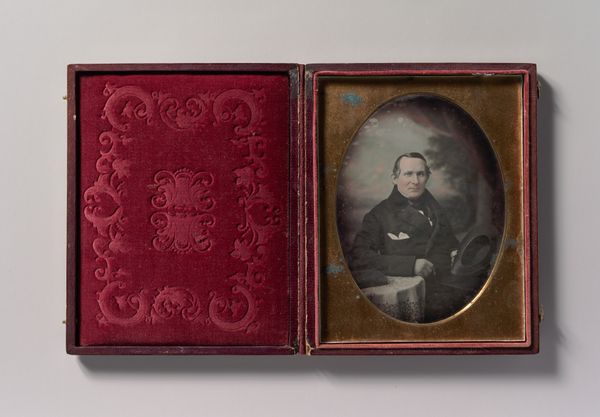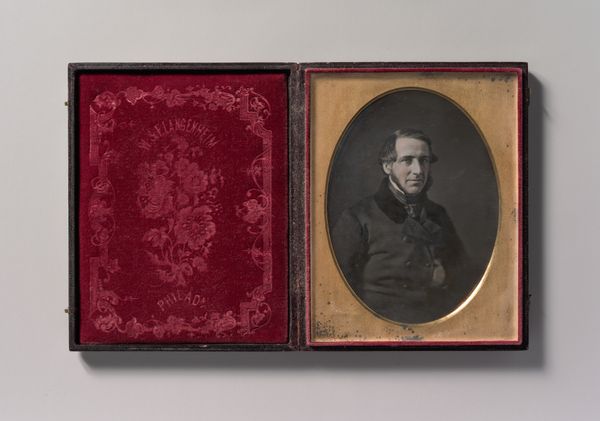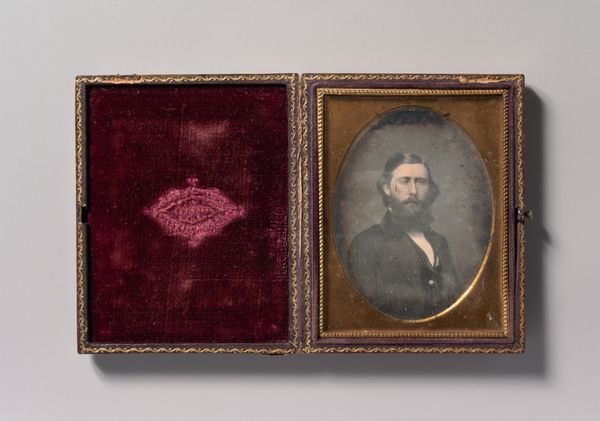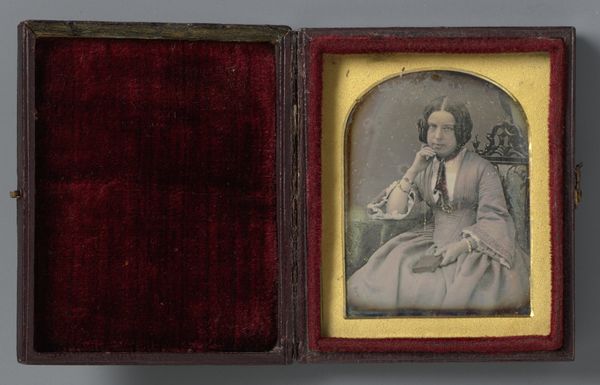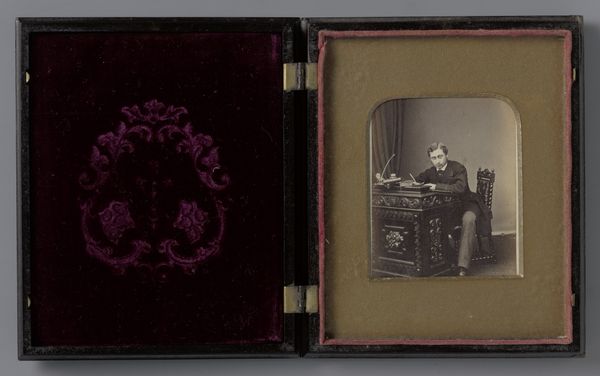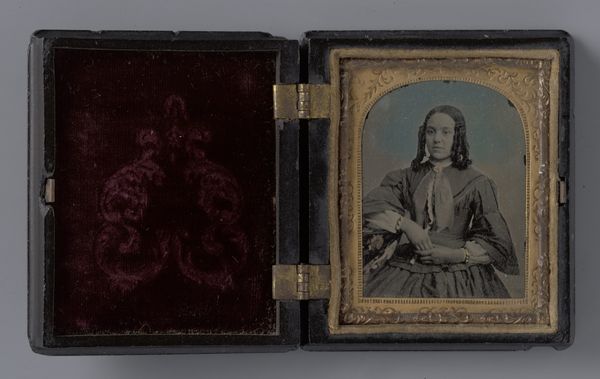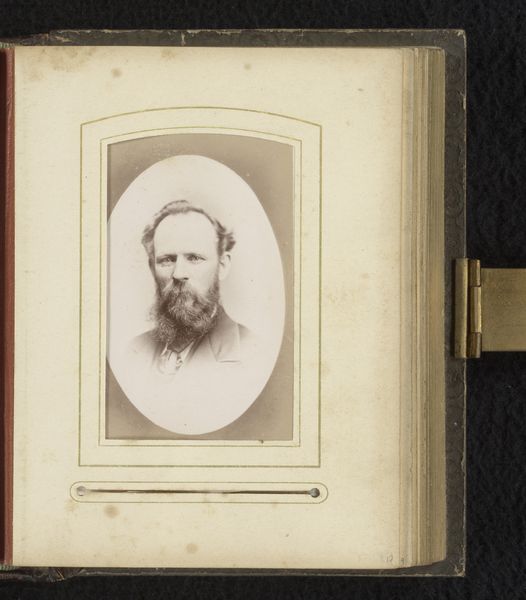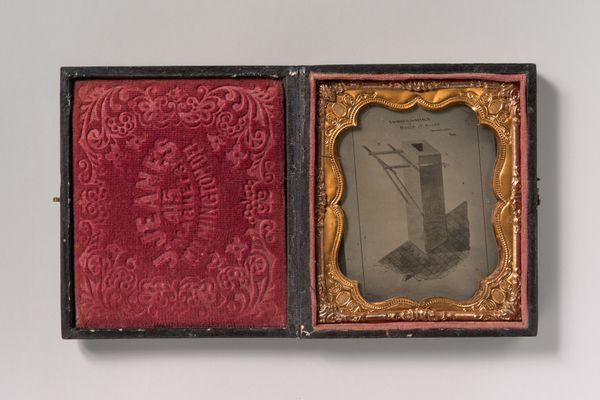![[Seated Middle-aged Man in Bow Tie and Jacket] by John Watkins](/_next/image?url=https%3A%2F%2Fd2w8kbdekdi1gv.cloudfront.net%2FeyJidWNrZXQiOiAiYXJ0ZXJhLWltYWdlcy1idWNrZXQiLCAia2V5IjogImFydHdvcmtzLzJkZjMyOGNlLTFlMTMtNDBmMy05YTFlLWE5YjMwZDEzZjM1MS8yZGYzMjhjZS0xZTEzLTQwZjMtOWExZS1hOWIzMGQxM2YzNTFfZnVsbC5qcGciLCAiZWRpdHMiOiB7InJlc2l6ZSI6IHsid2lkdGgiOiAxOTIwLCAiaGVpZ2h0IjogMTkyMCwgImZpdCI6ICJpbnNpZGUifX19&w=3840&q=75)
Dimensions: Image: 14 x 10 cm (5 1/2 x 3 15/16 in.) Plate: 19.1 x 15.2 cm (7 1/2 x 6 in.) Case: 1.9 x 20.2 x 16.5 cm (3/4 x 7 15/16 x 6 1/2 in.)
Copyright: Public Domain
Editor: So, here we have a daguerreotype from the 1850s, a portrait of a seated, middle-aged man in a bow tie and jacket, likely by John Watkins. There's a quiet dignity in the way he's posed, but also a hint of melancholy. What do you see in this piece, considering the period it was made? Curator: It's interesting to consider the social implications of this image, especially given the rise of photography in the mid-19th century. Prior to this, portraiture was largely the domain of the wealthy, but the daguerreotype democratized image-making. How do you think this accessibility affected the self-representation of the middle class? Editor: That’s a good point! Maybe it's the sitter's self-conscious attempt to emulate the aristocratic portraits he would have seen, while also wanting to appear modern? It’s interesting, because he does appear to have access to certain fashions, but something about it seems...different. Curator: Precisely. The context is important. Daguerreotypes became a powerful tool for constructing and circulating identities. The sitter in this portrait wants to project a particular image of himself; prosperous, intellectual, perhaps even a bit rebellious with his unconventional pose. Who do you think was the intended audience for such a portrait? Editor: Maybe for his family, or as a keepsake for a loved one? To me it almost seems like a precursor to modern headshots that are so meticulously crafted for professional life, a kind of formal, albeit subdued, performance. Curator: Exactly. The daguerreotype, while seemingly objective, allowed for a new kind of subjective expression and societal positioning. The choice of attire, pose, and even the quality of the image contribute to a narrative. Thinking about it in the context of our current image-saturated world, the contrast is fascinating. Editor: This was definitely a great experience for me. Understanding the social implications brings new context to something as seemingly simple as a photographic portrait. Curator: Agreed, it makes you question whose stories are visually recorded and shared, both then and now.
Comments
No comments
Be the first to comment and join the conversation on the ultimate creative platform.
